

Print job settings are available in PRISMAsync Remote Printer Driver, PRISMAsync Remote Manager and on the control panel.
 Print job settings on the control panel
Print job settings on the control panel [Original] and [Job] settings
[Original] and [Job] settings|
Job setting |
What you can define |
|---|---|
|
[Job type] |
Job type Indicate the type of job:
|
|
[Note for operator] |
Job instruction Print or finishing instruction for the operator. |
|
[Number of sets] [Check first set] |
Number of sets Indicate the number of sets:
|
|
[Job name] |
Job name Enter a new name for the job. |
|
[Print range] |
Print range Indicate if you want to print all pages or records, or want to select a print range. |
|
[Special pages] |
Banner pages, trailer pages, and separator sheets 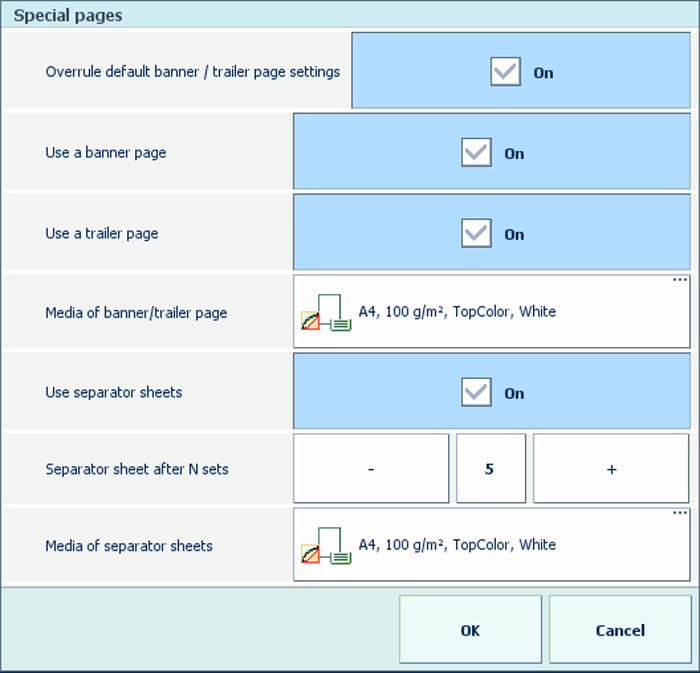
|
|
|
|
[Accounting ID] |
Accounting information Enter information for billing and charging job costs:
|
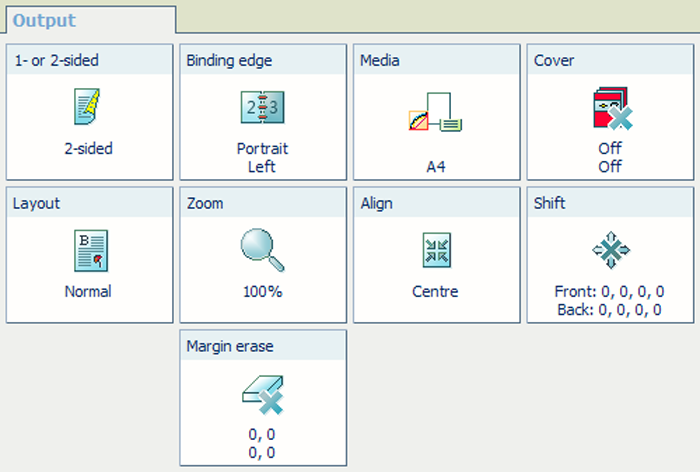 Output settings
Output settings|
Job setting |
What you can define |
|---|---|
|
[1- or 2-sided] |
Sides to print on Indicate if the prints are printed on one or both sides. |
|
[Binding edge] |
Orientation and binding location The orientation of the content is part of the original settings and cannot be changed. You can change the binding edge: the sheet edge to which the previous page is bound. |
|
[Media] |
Media Select the media for the job. |
|
[Cover] |
Usage of covers Indicate if you want to use covers and select the cover media. You can also indicate if you want to print on one or both sides of the front and back cover. The default media that are used for covers are configured in the Settings Editor. |
|
|
Multiple pages on a sheet Indicate if you want to print subsequent source file pages on one document page. 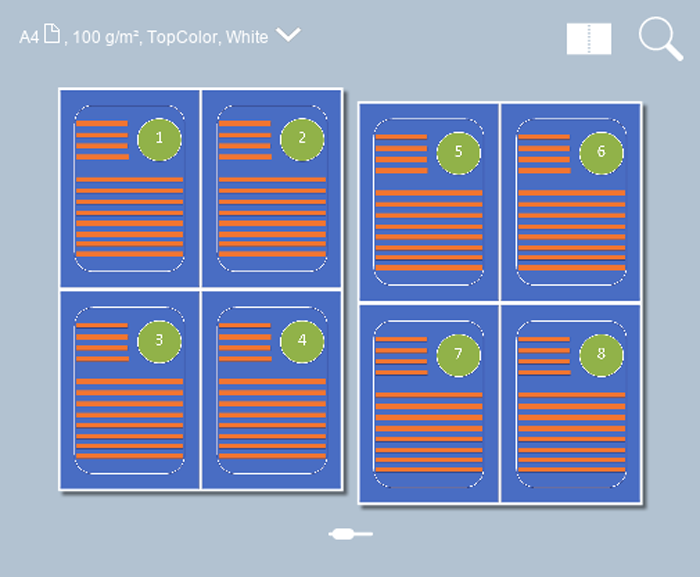 Imposition example of and option (sheet view)
Imposition example of and option (sheet view) |
|
|
Indicate if you want to fold a document: once to create a booklet, twice to create a quarto or three times to create an octavo. The sheets are printed in such a way that the pages of the folded document are presented in sequential order. 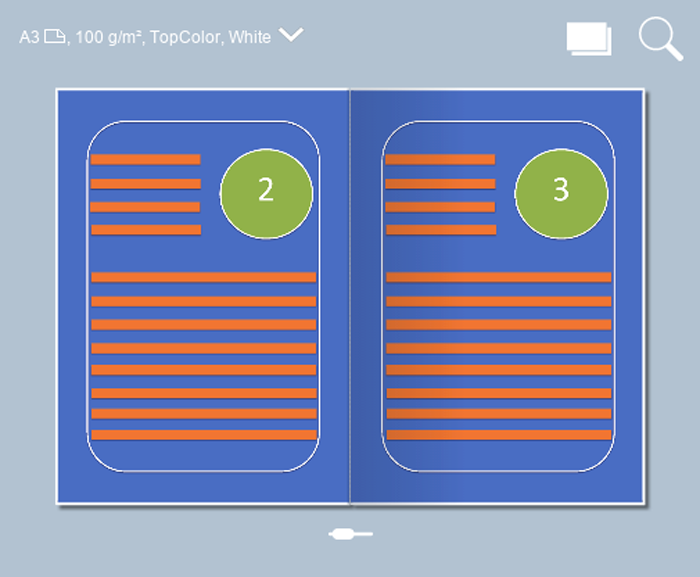 Imposition example of A4 document on A3 media with option (document view)
Imposition example of A4 document on A3 media with option (document view) |
|
|
Same page multiple times on a sheet Indicate if you want to print the same source file page multiple times on a document page 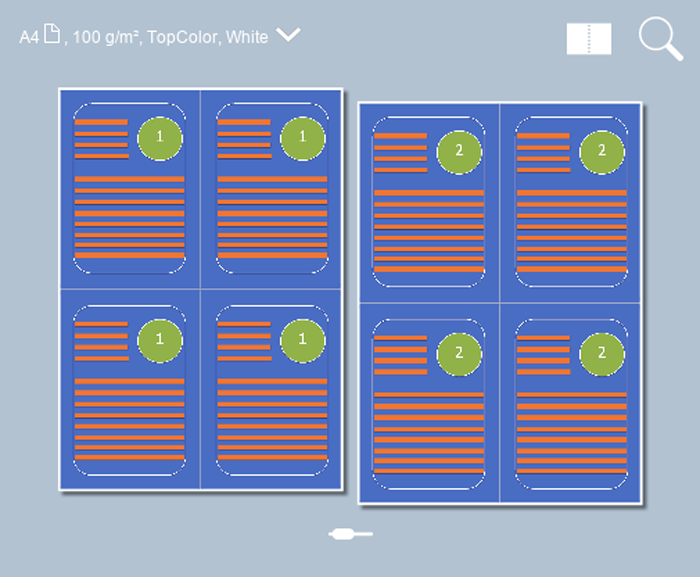 Imposition example of and option (sheet view)
Imposition example of and option (sheet view) |
|
[Zoom] |
Scaling factor Indicate if you want to scale the image according to the page size, or set the zoom factor manually (25% - 400%). 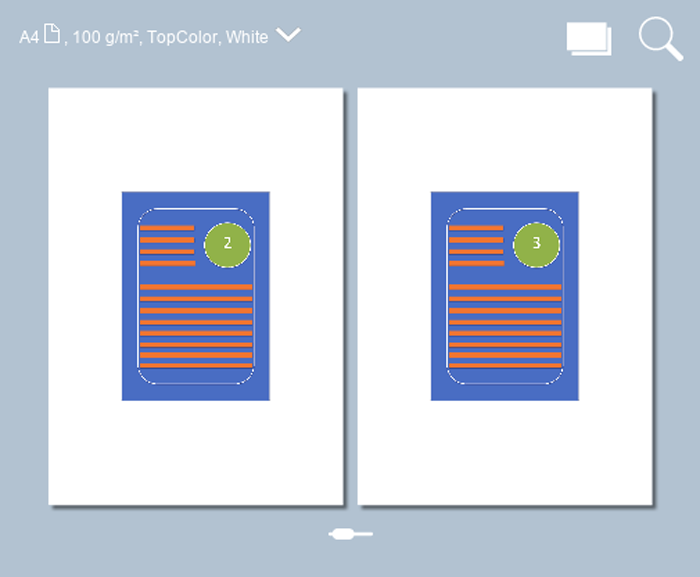 Imposition example of option (document view)
Imposition example of option (document view) |
|
[Align] |
Alignment of the image to a sheet location Indicate how you want to align the image on the sheet: to a corner, edge or to the middle of a sheet. 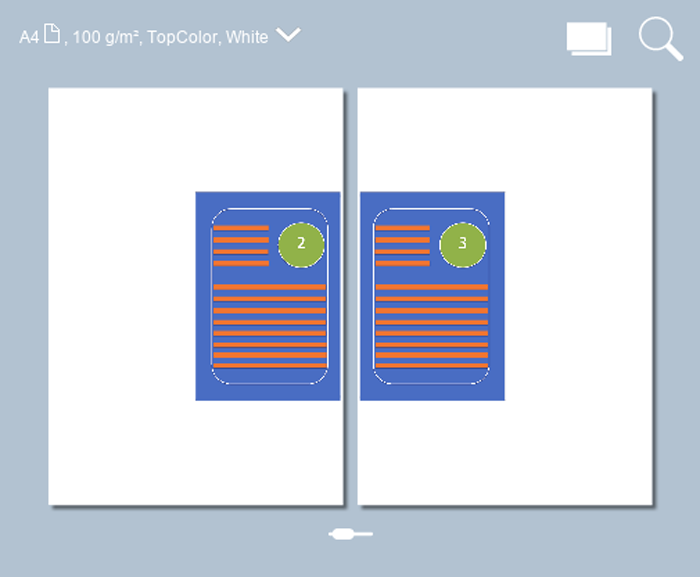 Imposition example of the and option (document view)
Imposition example of the and option (document view) |
|
|
Margin shift in the source document Indicate if you want to shift the margin of the source document to create more space at binding edges, with a maximum shift of 100 mm/3.94" 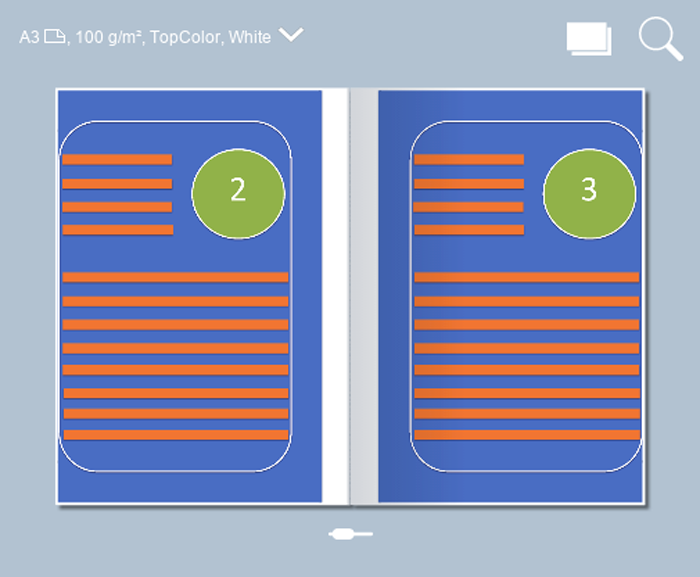 Imposition example of A4 document on A3 media with [Booklet] and [Margin shift] option (document view)
Imposition example of A4 document on A3 media with [Booklet] and [Margin shift] option (document view) |
|
|
Image shift on the sheet Indicate if you want to shift the image on the sheet, with a maximum shift of 100 mm/3.94". 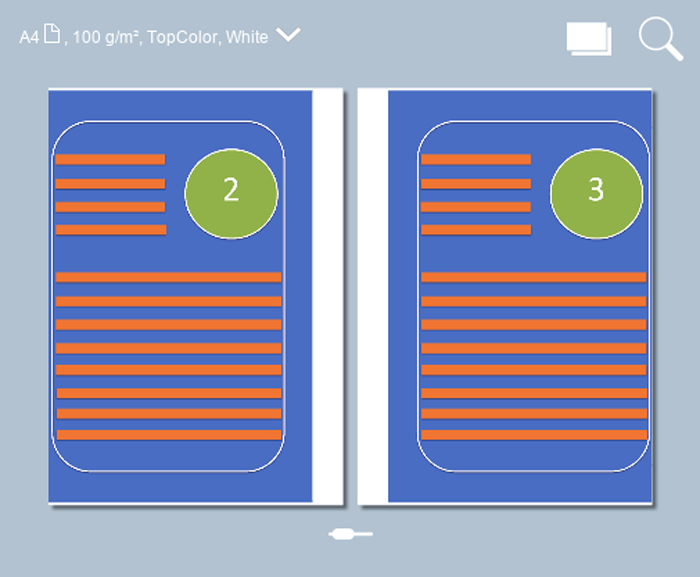 Imposition example with and option (document view)
Imposition example with and option (document view) |
|
[Margin erase] |
Erase the margin of the document Indicate if you want to erase the margins of the image. When you adjust the margin erase you erase areas of the image, with a maximum of 100 mm/3.94". 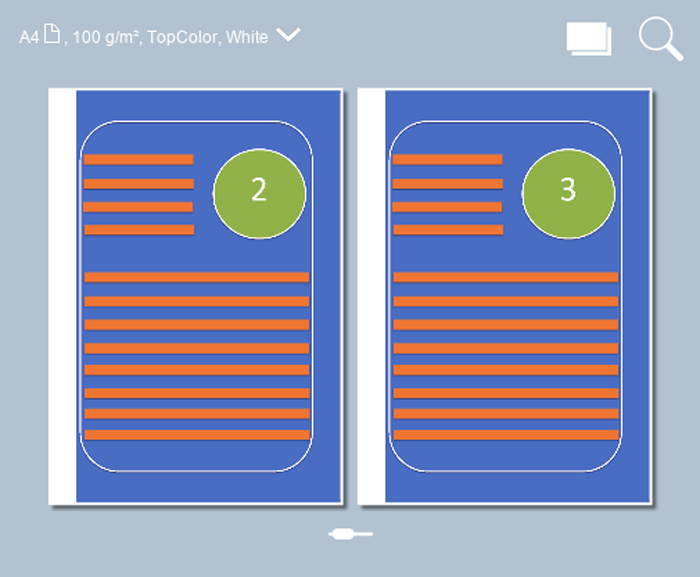 Imposition example with [Margin erase] option (document view)
Imposition example with [Margin erase] option (document view) |
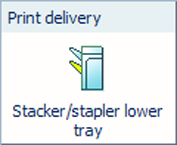 [Print delivery] settings
[Print delivery] settings|
Job setting |
What you can define |
|---|---|
|
[Print delivery] → [Output tray] |
Output tray Indicate which output tray to use. The selected finishing method can require a specific output tray:
|
|
[Print delivery] → [Sort] |
Sorting method Indicate how you want to sort the output, [By page] or [By set] |
|
[Print delivery] → [Offset stacking] |
Stacking method Indicate if you want stacking with or without an offset. Offset stacking depends on the active workflow profile. |
|
[Print delivery] → [Advanced settings] |
Delivery method Indicate the delivery method of the sheets in the output tray of your choice:
|
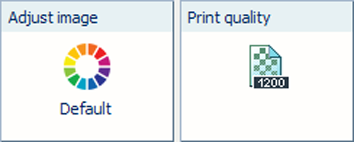 Print quality settings
Print quality settings|
Job setting |
What you can define |
|---|---|
|
[Adjust image] |
Adjustment of CMYK values on job level Adjust the CMYK curves on job level when needed. The PRISMAsync Print Server color management and print engine ensure optimal color reproduction on the media you use. However, sometimes you want to edit CMYK values on job level for a better result. |
|
|
Selection of the color preset If required, select a default color preset for the job:
|
|
|
Definition and adjustment of the color preset Adjust the color settings of the selected color preset and save the color preset if required. The color presets are also created in the Settings Editor. |
|
:
|
Input profile and rendering intent Indicate which input profiles and rendering intents you want to use. Furthermore, you can indicate if embedded profiles and embedded rendering intents must be overruled. For CMYK you can indicate if the color management system must preserve pure process colors or comply to standard color management rules. |
|
|
Spot color matching Indicate if you want to use the spot color table that stores standard and custom spot colors. Spot colors are managed in the Settings Editor, but they can also be added with the spot color editor. |
|
|
Halftone selection Indicate if you want to change the default selection of the halftones:
|
|
|
Other color presets There are several other color settings, each for a specific situation:
|
|
|
Print resolution Indicate the print resolution. |
|
|
Color bars on the printed output Indicate if you want to print an extra color bar on the printed output to check the ink density, dot grain and contrast. Color bars are created in the Settings Editor. |
|
|
Values of used color settings on printed output Indicate if you want to print the values of the used color settings on the printed output. Information bars are created in the Settings Editor. |
|
|
Print quality adjustments There are several settings available to adjust the print quality:
|
|
|
Page numbering Indicate if you want to have page numbers on the printed documents. |
 Finishing settings
Finishing settings|
Job setting |
What you can define |
|---|---|
|
[Binding] |
Binding method Indicate how to bind your document. |
|
[Folding] |
Folding method Indicate how to fold the printed documents . |
|
[Trimming] |
Trimming method Indicate how to trim the printed documents. |
|
[Punching] [Creasing] |
Punching or creasing method Depending on the current, installed die set on the printer, indicate either the method of punching or the method of creasing. |